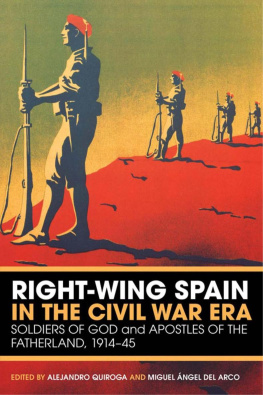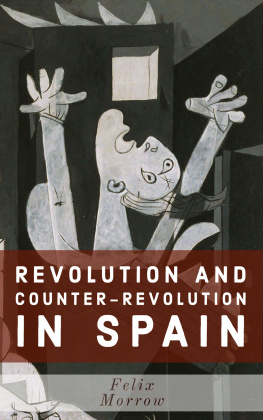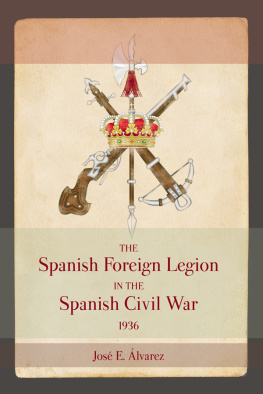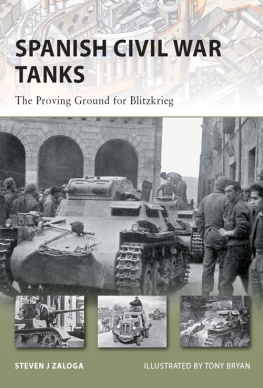SPANISH MARXISM VERSUS SOVIET COMMUNISM
A History of the P.O.U.M. in the Spanish Civil War
SPANISH MARXISM VERSUS SOVIET COMMUNISM
Victor Alba Stephen Schwartz
First published 1988 by Transaction Publishers
Published 2017 by Routledge
2 Park Square, Milton Park, Abingdon, Oxon OX14 4RN
711 Third Avenue, New York, NY 10017, USA
Routledge is an imprint of the Taylor & Francis Group, an informa business
Copyright 1988 by Taylor & Francis.
All rights reserved. No part of this book may be reprinted or reproduced or utilised in any form or by any electronic, mechanical, or other means, now known or hereafter invented, including photocopying and recording, or in any information storage or retrieval system, without permission in writing from the publishers.
Notice:
Product or corporate names may be trademarks or registered trademarks, and are used only for identification and explanation without intent to infringe.
Library of Congress Catalog Number: 87-19199
Library of Congress Cataloging-in-Publication
Alba, Victor.
Spanish Marxism versus Soviet Communism.
Includes bibliographies and index.
1. Partido Obrero de Unifcacin MarxistaHistory 2. CommunismSpainHistory. 3. Communist InternationalHistory. I. Schwartz, Stephen, 1948
II. Title
JN8395.A421987324.2460287-19199
ISBN 0-88738-198-7
ISBN 13: 978-1-4128-0733-3 (pbk)
ISBN 13: 978-0-88738-198-0 (hbk)
To the memory of
ANDREU NIN
1892-1937
and
JOAQUM MAURN
1896-1973
Io desig o que em pora ser gran cost,
i aquest esper de molts mais maconhorta
I desire what can only cost me greatly,
and this hope comforts me against many evils
Ausias March
Contents
While there had always been some Marxists in Spain, there exists historically only one party that not only analyzed the reality of the country in the light of Marxism, but which tried to apply Marxism to the formulation of its political line. This was the Partido Obrero de Unificacin Marxista, the Workers Party of Marxist Unification, better known from its initials as the P.O.U.M. Another of its aspects makes this party special: it has been the only dissident, anti-Stalinist Communist movement, so far, not to remain a tiny grouping of intellectuals and students; The P.O.U.M. came to be a party of the worker masses and was, in reality, originally more powerful than the official Communist party from which the founders of the P.O.U.M. derived.
The history of how this party was organizedbeginning within the ranks of the anarchosyndicalist National Labor Confederation (CNT), then passing through the Third (Communist) International, and finishing with an attempt at its physical elimination from the scene by representatives of the same Third Internationalis an especially instructive episode in the history of the labor movement, in Spain and worldwide.
The P.O.U.M. arrived early at an understanding of the true character of Stalinismand this cost the lives of many of its militants, as well as obscuring its interpretation of Spanish social reality, which continues to be the most adequate, even with the coming of later changes.
The history of the P.O.U.M., then, proves that it is possible to cease being a groupuscule and swim against the political stream without for that reason losing influence, although probably not without running risks. It is, then, a living lesson for an epoch in which it seems everyone fears distancing themselves from commonly used cliches.
As indicated by its dual signature, this work is much more than a simple translation. Mr. Schwartz began by translating the Spanish manuscript of the French edition of Albas work, HISTOIRE DU P.O.U.M., published in Paris. Mr. Schwartz cross-checked his translation work with the Spanish and Catalan original editions, the first under the title EL MARXISMO EN ESPANA (1919-1939): HISTORIA DEL B.O.C. Y DEL P.O.U.M., published in Mexico in 1973, in two volumes, the second as EL MARXISME A CATALUNYA (1919-1939), published in four volumes in Barcelona in 1974 and 1975.
Mr. Schwartz, in addition, edited and amplified the work, using materials published in several languages since Professor Albas works had their first editions, and, in particular, clarifying biographical information on some foreign participants in the Spanish Civil War. Mr. Schwartz is the sole author of chapter 7, on foreigners and the P.O.U.M.
Mr. Schwartz wishes to express his special thanks to the following: for special encouragement in pursuing this work: Wayne M. Collins Jr., Sandra Benedet, William Herrick, Manuel Fernndez Grandizo (G. Munis), Franois Tara, Mary Low Machado, Ella Wolfe, Jean fan Heijenoort, Morris Weisz, Carlos Ba Blanes, and Rebecca Long. Mr. Schwartz further enjoyed the active help of a number of historians in the field of Spanish civil war studies: Burnett Bolloten and his research assistant George Esenwein, Pierre Brou, and Rainer Tosstorff; the latter is author of a major academic study, Die P.O.U.M. Wahrend des Spanischen Burgerkriegs, presented as a doctoral thesis at the University of Bochum, in 1986. Finally, to Horace and Eileen Schwartz, and to Barbara Szerlip for typing and indexing services, and to Phyllis Petel for proofreading.
Mr. Schwartz was supported in this project by the Institute for Contemporary Studies, San Francisco. Acknowledgements are also due the library and research staffs of the Houghton Library, Harvard University, and the Hoover Institution, Stanford University.
Given that the events described in this book are focused almost entirely on the Catalan speaking areas of the Iberian peninsula, I have retained herein the Catalan spellings for those place-names, personal names, and some political titles that have their origins in the Catalan language. Thus, Lleida (Catalan) = Lrida (Castilian), Girona = Gerona, Castell = Castelln, Alacant = Alicante, Saragossa = Zaragoza. Plaa and carrer are Catalan for plaza and street.
In order to maintain a standard, a difficult matter when dealing with a genuinely bilingual situation such as has occurred in Catalunya, I have pluralized words ending in ista in accord with Catalan style. Thus, bloquista (sing.), hloquistes (pl.) The final e is pronounced like an unaccented amore like the English than the Castilian pronunciation of istas.) Other such plurals are cenetistessindicalistescatalanistespoumistes, and ugetistes.
Finally, a number of Catalan masculine given names are normally written in a form that can be confusing to English readers. For example, the well-known P.O.U.M. leader Gorkns first name is Julin in Castilian, Julia (with the j equivalent to English zh) in Catalan. In the case of Gorkin I have retained the Castilian form since Gorkin has published so much in so many languages using the Castilian version of his first name. All of this is mentioned to underscore that the militia leader Marci Mena (Marciano in Castilian) was, unlike another militia leader, Mika Etchebehere, male. So were Juli Maurn and Mari (Mariano) Vzquez.
Stephen Schwartz
1
From Lucha Obrera to La Batalla
The peripheral zones of the Iberian peninsula, Catalunya, and the Basque Country (Euzkadi), developed, were industrialized, and saw the emergence of the working class more quickly than the Castilian center did. Even under the despotic rule of Spains political ilustrados, the periphery exercised pressure in the direction of modernization: during the nineteenth century, it fought unsuccessfully to complete a bourgeois democratic revolution. Feudal forcesthe latifundista aristocracydominated Spain, while the army transformed itself, after the Carlist wars, from a liberal to a conservative force.








